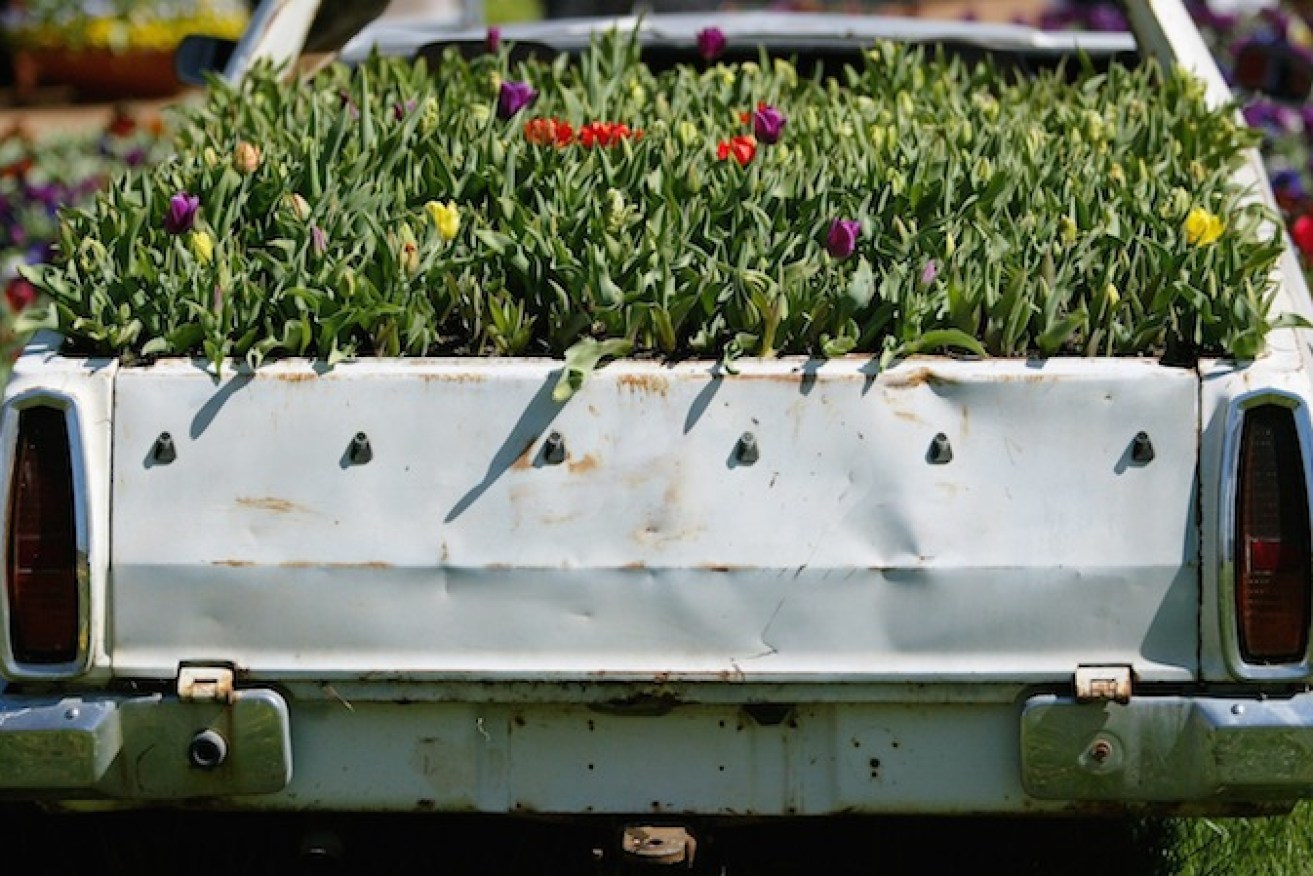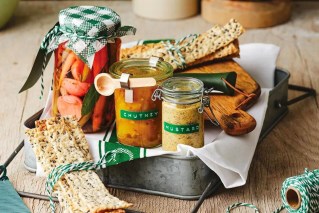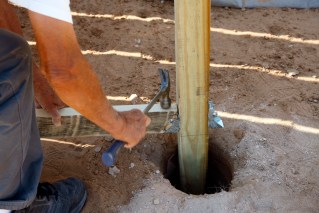It’s blossom season – make the most of it


Floriade is well worth the road trip. Photo: Getty
Spring is different for people depending on their climate. For some, it’s bulbs, for others, it’s wattles, but for me, it’s a cloud of plum blossom on the street trees in the suburb I grew up in, and the subsequent petals swirling in the sky with the first winds!
• Five things to do in your garden right now
• Four easy steps to rescuing dying grass for Spring
• Man grows 400 acres of sunflowers for his wife
From now until October, there is a succession of flowering blossom trees that build in a crescendo. First is the Taiwan Cherry, next the apricots then the plums with their dark purple leaves chasing the flowers off fast. Then the pear trees, followed by the rest of the cherry and the crabapples. It is such an ephemeral delight that I don’t even mind the brevity of the show.
Where to go
In Japan, thousands of people chase the cherry blossoms, known there as Sakura, up and down the countryside. Hanami is the centuries-old practice of picnicking under a blooming sakura or ume tree.
Here, the closest thing to come to this is Sakura Matsuri, a major event on Cowra’s tourism calendar, celebrating the birth of spring. It attracts performers from across Australia and around the world. Locals, Australian and International visitors alike have the opportunity to experience traditional elements of Japanese culture.
Sakura at the Cowra Japanese Garden is celebrated on 26th September when the cherry blossoms are at their peak, though the cherry blossoms usually continue to flower up until mid October.
This year’s festivities include displays and performances by Taiko Drummers, and include workshops for origami and kite making, tea ceremonies, bonsai displays, calligraphy and much more!
If you can’t get to Cowra, consider getting down to Floriade in Canberra or your local nursery where you will find a blossom tree perfect for your own garden. Many have fruit that follow the blossoms and autumn foliage that can colour beautifully if you’re in a cooler area.

Floriade is well worth the road trip. Photo: Getty
Grow your own
Soil and climate
All flowering fruit trees are adaptable to most soil types, but they benefit from regular feeding, summer watering and a heavy application of leaf mulch.
The majority of species tolerate a range of climates, although cherries and crab apples do perform better in areas with cold winters.
If you live in a warm coastal area and still want the beauty of spring blossom, stick with flowering peaches, which are suitable even for seaside gardens provided they are sheltered from salt-laden winds.
Types of blossom tree
Flowering apricots
Have a delicate profusion of flowers, more so than other blossoms. Varieties include white and pink, in either single or double forms, all of which are fragrant. These trees have a broad, spreading shape and grow to about 4m high with a 4m spread.
Flowering cherries
 One of the first of the blossom trees to flower is the weeping cherry Prunus subhirtella ‘Winter Sun’, which grows best in cool-climate gardens. The Taiwan cherry, Prunus campanulata, prefers warmer conditions and has pendulous, bell-shaped, deep pink blossoms throughout winter.
One of the first of the blossom trees to flower is the weeping cherry Prunus subhirtella ‘Winter Sun’, which grows best in cool-climate gardens. The Taiwan cherry, Prunus campanulata, prefers warmer conditions and has pendulous, bell-shaped, deep pink blossoms throughout winter.
Different cherries have different requirements for cold temperatures; basically, without cold winters they won’t flower or set fruit. The Taiwan cherry has the lowest chill requirement of all the cherries, which means it can tolerate warmer climates and is one of the first to flower, usually in the middle of winter.
The single, bell-shaped flowers are a deep cyclamen red and hang in pendulous clusters. This tree’s mature dimensions of 4 x 3m, with an upright, narrow habit, make it ideally suited to a small garden.
Other species, more suitable for cooler regions, include the Japanese and Chinese cherries, which are usually grown as standards, creating a broad umbrella effect.
They can also be grafted low and used as spillover plants down an embankment. Most cherries have the bonus of a brilliant autumn show of foliage, with colours ranging from yellows to brilliant reds.
Flowering peaches
The winter-flowering peaches, reliable small flowering trees, reach about 4m at maturity. These magnificent blossom trees grow well in warm-temperate areas. Prune them immediately after flowering to prevent fruit formation and to encourage vigorous new growth for next season’s flowers.
Spring-flowering varieties such as Prunus ‘Clara Meyer’ and ‘Harbinger’ follow in early spring. Tending to flower mid-season, the crimson Prunus persica ‘Magnifica’ makes a strong splash of colour, while ‘Versicolour’ is an unusual specimen with multicoloured blooms that range from almost white to candy-striped and deep pink. The white-flowered ‘Alboplena’ is always popular, with its large white double flowers.
Flowering pears
If you’re struggling to find the right tree to cope with pollution, poor drainage, heavy clay soils and even the odd dry spell, then think about ornamental pears (Pyrus) as an option. They’re among the hardiest and easiest to grow of all garden trees, and have excellent foliage, bright autumn colours and white spring blossom.
Recently developed ornamental pears come in many shapes and sizes too, from the P.calleryana narrow cultivar called ‘Capital’ to the stunning ‘Chanticleer’, which has a dense canopy that screens beautifully before changing to gold, plum and then burgundy prior to leaf drop.
There is a silver-foliage weeping type called P. salicifolia ‘Pendula’ and a pretty snow pear that has grey-green leaves.
Flowering plums
Well suited to warm gardens, the flowering plums are the hardiest of all blossoms, tolerating a wide range of climatic conditions (down to 10 degrees Celsius) and soil types. Foliage is one of their principal features, and the flowers, which appear in early spring, range from white through to pink in both single and double forms. Blossoms are followed by dark black-red foliage, which provides a strong contrast. Flowering plums can grow to about 4m high by 3m wide.
Crab apples
Crab apples flower later in spring, with the blossoms appearing after the foliage. Closely related to eating apples, they have small, edible and often decorative fruit. Their moderate size and shapely spreading form make them ideal shade trees in small gardens. Once established, a crab apple flowers and fruits better if left undisturbed.
There are many varieties of crab apple, ranging from pink single-flowered trees, such as the Japanese crab apple, to spectacular double forms such as Bechtel’s crab apple.
Dogwood
In really cold areas, why not plant a dogwood? A North American native, the dogwood is a delightful tree. The simple flower head consists of an inconspicuous flower surrounded by snowy white or rosy pink bracts. Its foliage is richly coloured in autumn, and its spring growth is sometimes flushed pink, depending on the variety. This is a great small tree, growing to about 5m in height, and requires little in the way of pruning or feeding.
This is an abridged extract from Meredith’s book Dig Deeper: Seasonal, sustainable Australian gardening, available here.









